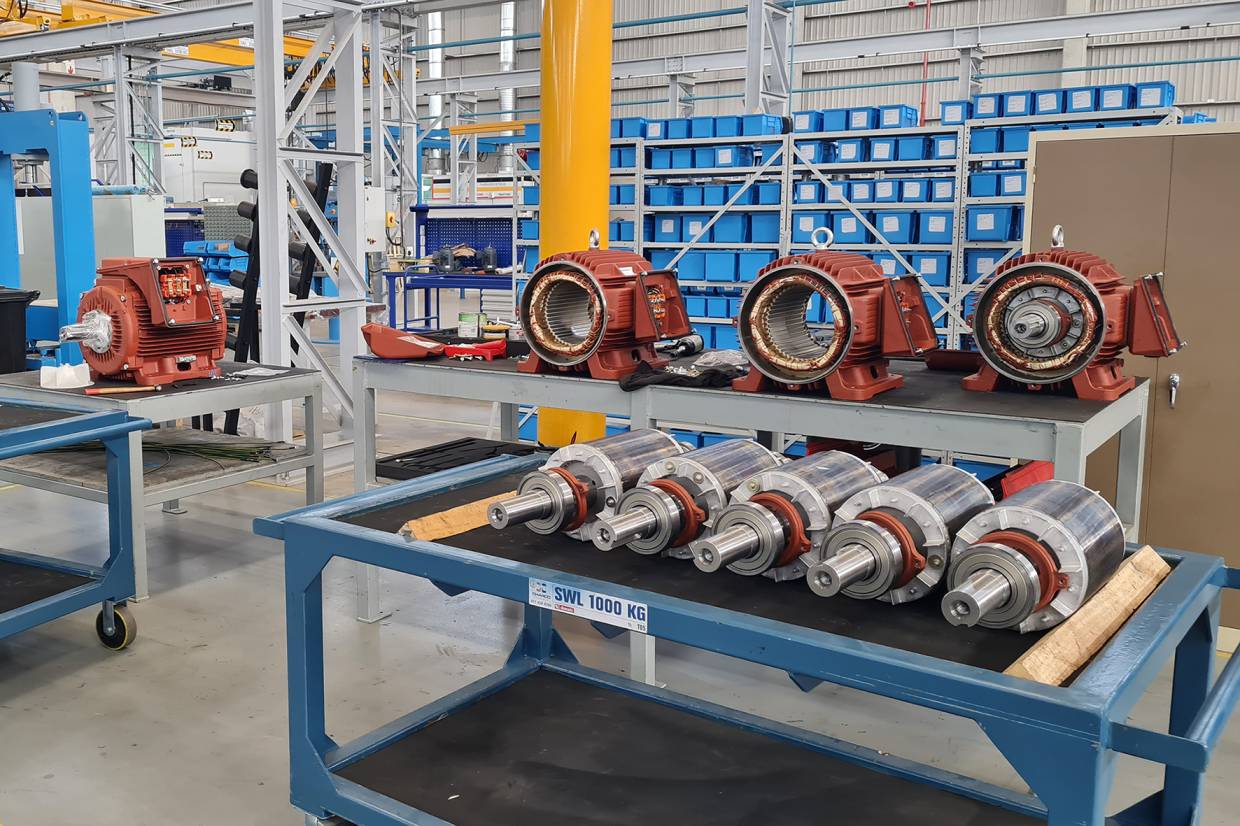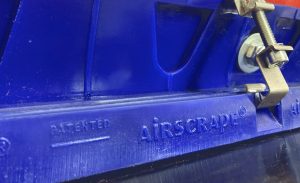Further extending Zest WEG’s local manufacture of electrical equipment for mining and other sectors, a new assembly line for low voltage (LV) motors has been established. The facility is part of Zest WEG’s corporate premises at Longlake, east of Johannesburg. According to CEO Eduardo Werninghaus, the new line enhances operational flexibility and reduces lead times to customers.
“As a Level 1 B-BBEE company, our commitment to transformation includes continuous promotion of local manufacture,” says Werninghaus. “Our focus on premium efficiency IE3 motors is also significant as it helps drive energy efficiency – a key sustainability goal for mines and other industries.”
According to Sindi Mbhalati, operations executive at Zest WEG, the assembly line required considerable investment in equipment. This included jib cranes for easier materials handling, an air reticulation system to feed compressed air to the pneumatic tools on the line as well as to the spray booth and packaging equipment, enhancing the efficiency of the production processes and a state-of-the-art test panel.
As with any world class manufacturing and assembly operation, record keeping is an important cornerstone. The panel is therefore synchronised with the advanced WEG manufacturing facilities in Brazil, for complete and accurate record tracking and evaluation. Each motor undergoes routine testing which includes winding resistance tests, accessories tests, insulation resistance tests and no-load tests.
Elaborating on this, Mbhalati says that the panel tests winding resistance per phase with an imbalance test to compare the imbalances between the resistance results, while the accessories resistance test confirms that the accessories installed in the motor are in working order. The panel also tests for insulation resistance which provides the team with data on the motor winding health. A No-Load test is conducted to determine the current that the motor draws at no-load and determines the imbalance of the current drawn between the phases.
“Further ensuring operational efficiency, the line was capacitated with state-of-the-art equipment including a heating and greasing facility as well as rotor assembly C-hooks,” says Mbhalati. “In addition and most importantly the assembly line has been engineered to allow multiple shifts to be worked should it become necessary to increase capacity and output. This type of futureproofing to accommodate market demands is in line with Zest WEG’s commitment to its customers.”
The facility has created several new jobs within the business. Most of the new employees are dedicated to the W22 motor assembly line, while some others are shared with the company’s various production lines.
“To ensure the highest quality standards in the assembly process, Zest WEG put our new staff through extensive technical and process training relevant to the new line,” she says. “This included in-depth product and component training, as well as the operation of the specialised test panel.”
Among the components Zest WEG procures for assembly are rotors, stators and bearings. These are produced mainly at WEG’s extensive manufacturing facilities in Brazil, under stringent quality conditions. These are thoroughly tested before shipment to Zest WEG. Smaller components are sourced from local suppliers wherever possible, in line with the company’s supply chain development policy.
“Governed by our ISO 9001 quality certification, the new assembly line is closely monitored by our dedicated quality department,” says Mbhalati. “All motors are tested and quality inspected prior to dispatch to customers.”
She highlights that Zest WEG’s quality control personnel are rigorously trained to assess motors during the build process as well as final quality inspection and testing. All aspects are aligned with WEG quality procedures, ensuring world class standards are maintained across all operating parameters.
Werninghaus highlights that mines are always looking for opportunities to promote local supply chains in line with the Mining Charter, and also to reduce their energy consumption and carbon footprint. With some 65% of industrial energy worldwide consumed by motors, WEG’s global corporate strategy aims to use resources responsibly and to create fewer emissions.
Werninghaus recently assumed the role of CEO at Zest WEG, bringing 15 years of experience in the WEG group in Brazil and the US. This includes five years as part of establishing WEG’s wind turbine capability. His two years in the US included an important role as vice-chair of the National Electrical Manufacturers Association (NEMA), which develops standards for electric motor designs, frame sizes, enclosures and configurations.
As part of the Brazil-based WEG group, a leading global player in electric motors, Zest WEG is one of a wide network of the group’s manufacturing facilities. He emphasises that this ensures the highest level of quality and engineering locally.
“We apply WEG’s stringent quality control protocols to new LV motor assembly line here in South Africa,” he says. “All the motors produced from our local facility undergo the same standard of testing and analysis as any of our factories across the world.”
Zest WEG’s extensive manufacturing base in South Africa means that it achieves almost 90% local content capability for its transformers and more than 70% local content capability for other products such as E-houses and panels. These products form part of the company’s wide range of solutions, including energy generation, electrical infrastructure, automation and generator sets.





